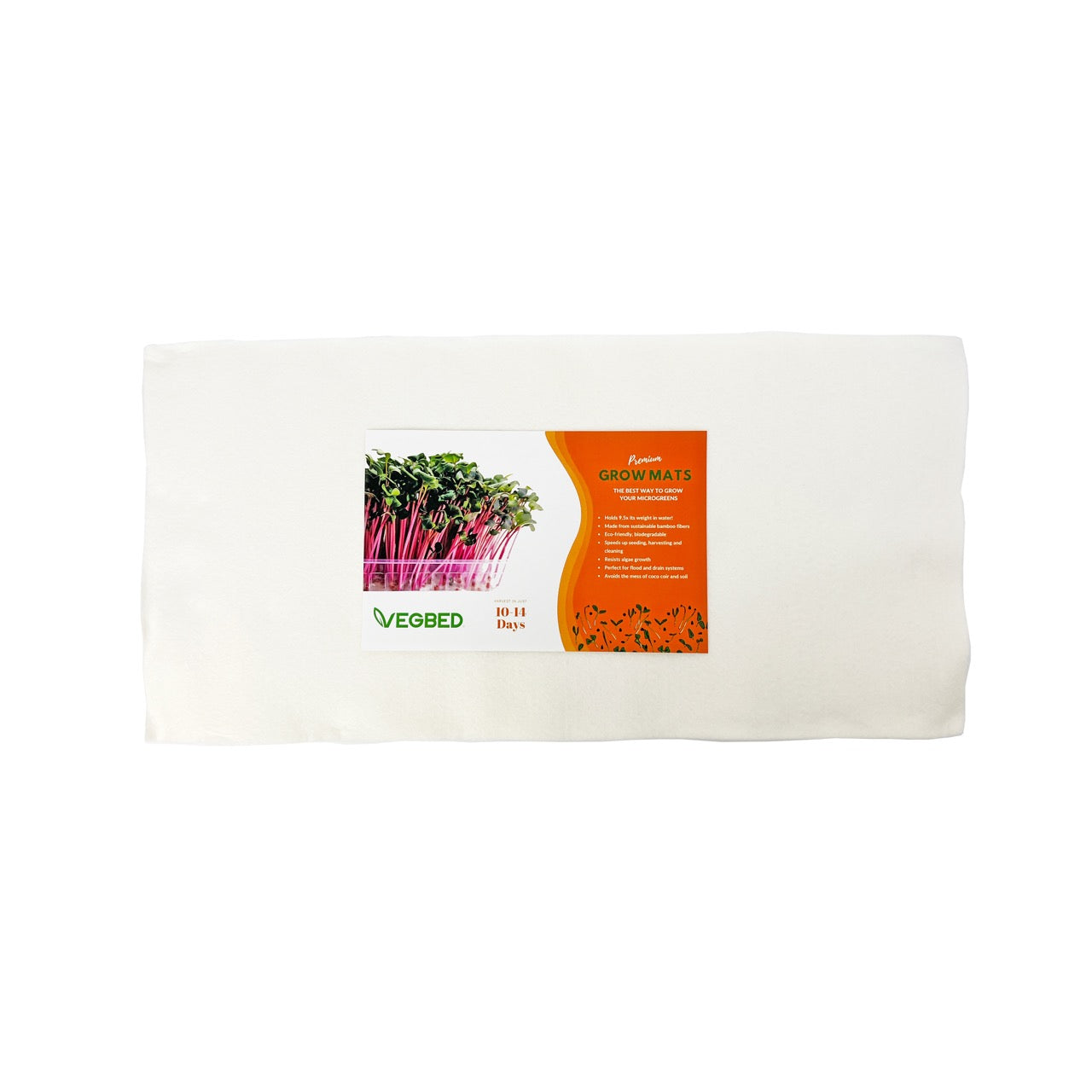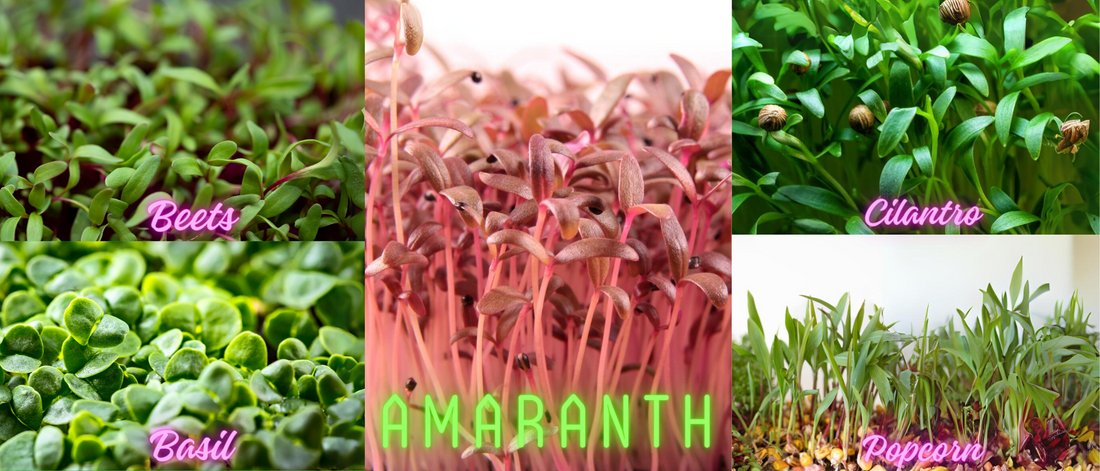Microgreens are popular for their intense flavor and concentrated nutrients in a compact package. However, not all microgreens are created equal. While some, like radish and pea shoots, practically sprout overnight, others demand a bit more attention to detail.
Here, we tackle the 5 toughest microgreens to grow and equip you with the knowledge to cultivate these greens!
The Notorious Few:
Amaranth: They are packed with protein and boast a slightly bitter flavor. However, their tiny seeds and specific temperature requirements (warm days, cool nights) can be tricky.Beets: Beet microgreens add a vibrant ruby-red color to your dishes and a delightful earthy taste. The challenge? Their seeds are encased in a hard outer shell (called a glomerule) that needs scarification (scratching) to encourage germination.
Basil: Beloved for its aromatic leaves, basil microgreens are stubborn. Their delicate seeds require high humidity and consistent warmth to germinate successfully.
Cilantro: These fragrant greens add a zesty touch to many dishes, but their journey from seed to harvest can be frustrating. Cilantro seeds have low germination rates and prefer cooler temperatures, making them a test of patience for novice growers.
Popcorn: Who knew popcorn could be a microgreen contender? While offering a fun twist, popcorn kernels are notoriously slow to germinate and require constant moisture.
How to Deal With These Microgreens:
So, you're up for the challenge? Here's how to conquer these tough microgreens:Seed Preparation:
Amaranth: Soak seeds for 8-12 hours before planting to soften the seed coat.Beets: Gently scratch the glomerule with sandpaper or a nail file to break through the shell and promote germination.
Basil: Soak seeds for a few hours in warm water to increase their success rate.
Sowing and Germination:
All: Use a shallow container with good drainage. Sow seeds sparsely on a damp (not soggy) growing medium.Basil and Cilantro: Create a mini greenhouse by covering the container with a clear plastic dome to maintain high humidity.
Popcorn: Mist the seeds daily to keep them consistently moist throughout the germination period.
Light and Temperature:
Amaranth: Provide 12-14 hours of indirect sunlight and maintain a daytime temperature of 70-75°F (21-24°C) with cooler nights (around 60°F/15°C).Beets: Start with warm temperatures (70-75°F/21-24°C) during germination, then gradually lower to 60-65°F (15-18°C) for growth. Provide moderate light.
Basil and Cilantro: Aim for 6-8 hours of daily sunlight and maintain a consistent temperature range of 65-70°F (18-21°C).
Popcorn: Keep the temperature around 70-75°F (21-24°C) and provide moderate light.
Watering:
All: Maintain consistent moisture in the growing mat, but avoid overwatering. A spray bottle can be helpful for gentle watering.Harvest:
Most: Harvest microgreens when the first true leaves appear (usually within 7-14 days for most challenging varieties).Popcorn: Be prepared for a longer wait (up to 2 weeks) before harvesting these slow starters.
Remember: Patience and attention to detail are key when tackling these tough microgreens. By following these tips, you'll be well on your way to sprouting these microgreens!


